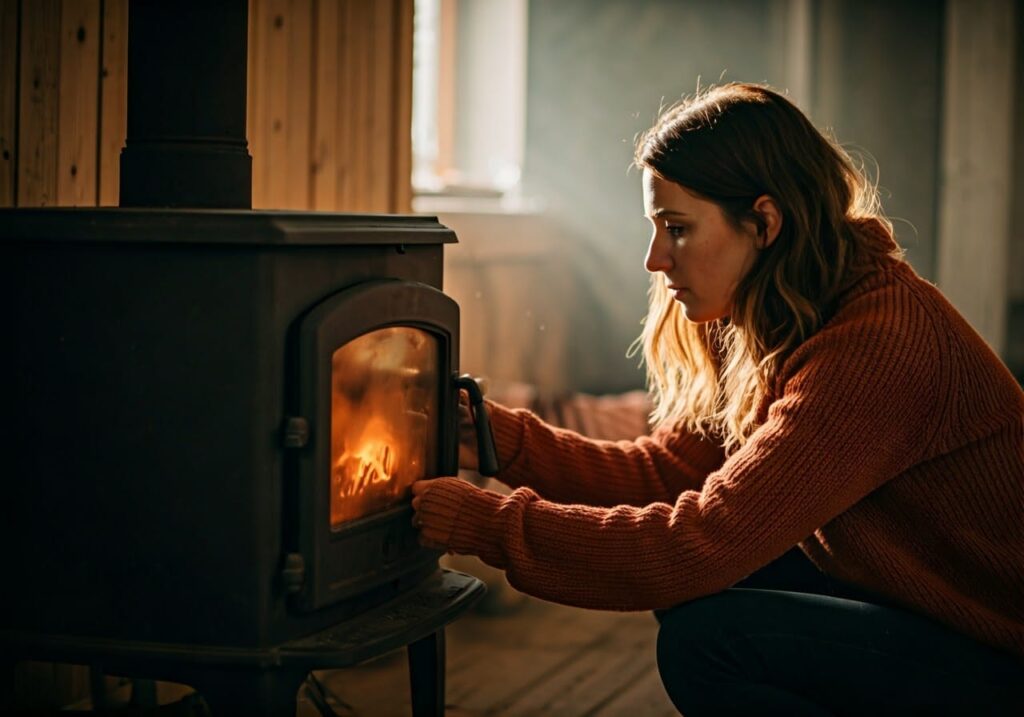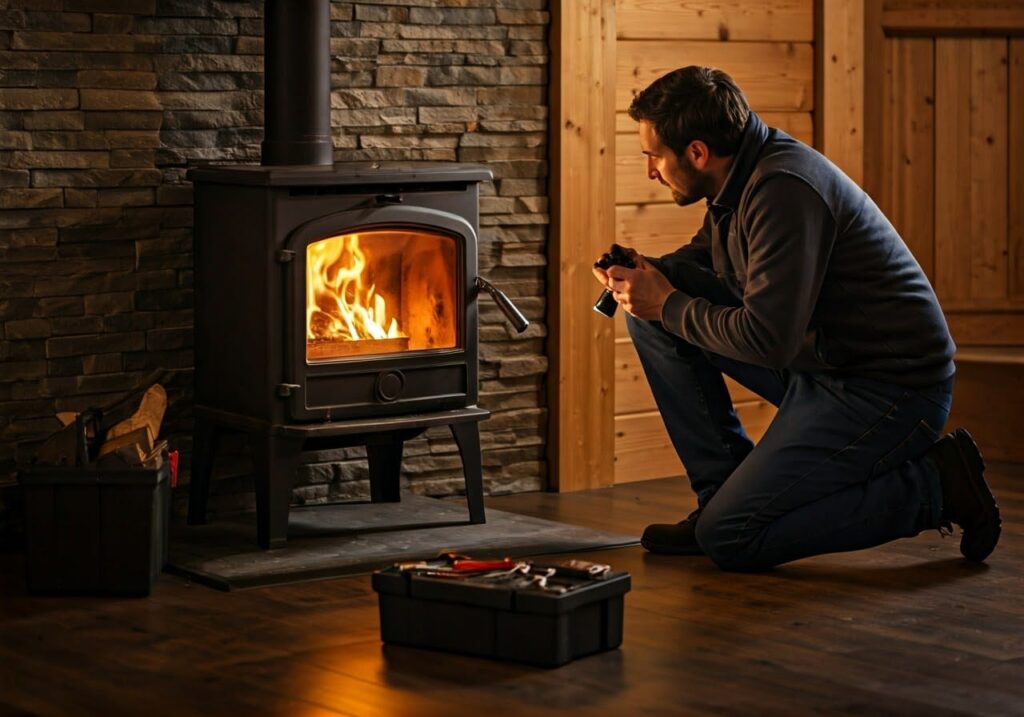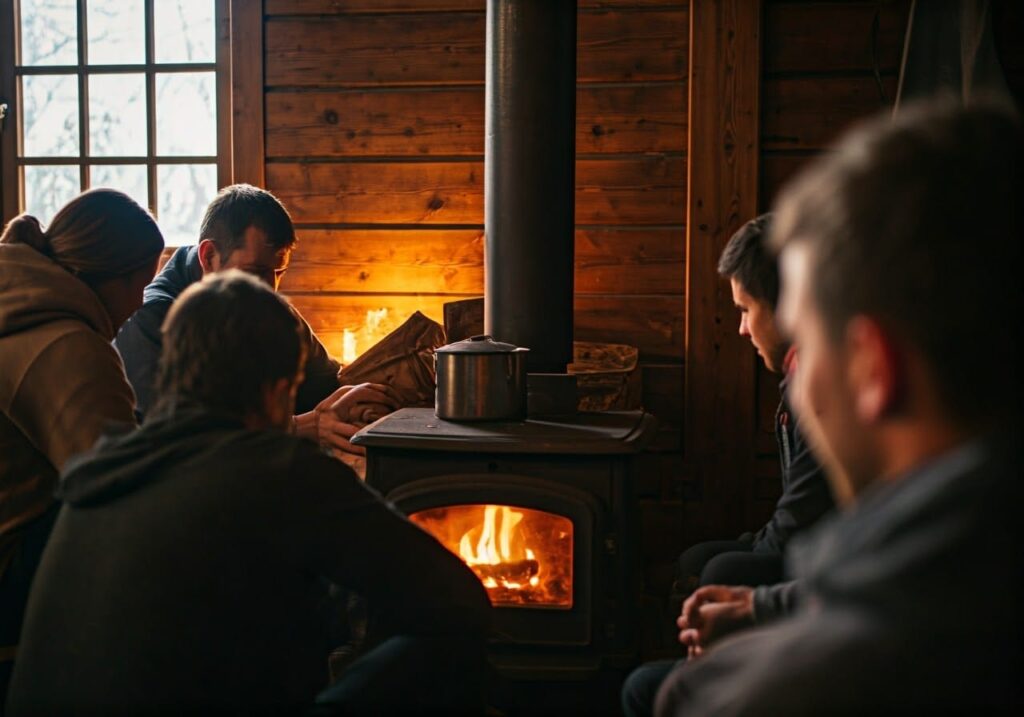
Troubleshooting Guide for a Reliable and Warm Burning Experience
A wood stove that won’t stay lit can be frustrating, especially on chilly evenings when you crave warmth and comfort. If you’re struggling to keep your wood stove burning steadily, this comprehensive guide will help you identify the root cause and provide actionable solutions to ensure a reliable and warm burning experience.
Understanding the Basics of Wood Stove Combustion
For a wood stove to stay lit, three essential elements must be present:
- Fuel (Wood): Properly seasoned and dry.
- Oxygen (Airflow): Sufficient airflow for combustion.
- Heat: Initial heat source to ignite and sustain the fire.
Top Reasons Your Wood Stove Won’t Stay Lit
1. Insufficiently Seasoned Wood
- Cause: Burning wood with high moisture content.
- Solution:
- Use a Wood Moisture Meter.
- Ensure Wood is Seasoned for 6 Months to 1 Year.
- Store Wood Properly: Protected from elements, with airflow.
2. Inadequate Airflow
- Cause: Insufficient oxygen for sustained combustion.
- Solution:
- Check and Adjust Air Vents: Ensure proper airflow.
- Verify Chimney Draft: Ensure a strong, consistent draft.
- Consider a Draft Inducer: If drafting issues persist.
3. Poor Stove Maintenance
- Cause: Creosote buildup, ash, or debris hindering airflow and heat.
- Solution:
- Regular Cleaning Schedule: Weekly, monthly, and annual cleanings.
- Inspect and Clean the Chimney: Annually, or as needed.
- Replace Worn-out Parts: Gaskets, door seals, or damaged components.
4. Incorrect Stove Installation
- Cause: Improper installation affecting airflow, draft, or heat retention.
- Solution:
- Consult a Professional: For a thorough installation assessment.
- Correct Any Installation Issues: Ensure compliance with local building codes.
5. Lack of Kindling or Tinder
- Cause: Insufficient initial heat source to ignite larger logs.
- Solution:
- Use Proper Kindling and Tinder: Dry, fluffy material to start the fire.
- Arrange Logs for Optimal Airflow: Leave space between logs for air to flow.
Step-by-Step Guide to Keeping Your Wood Stove Lit: A Comprehensive Approach to Warmth and Efficiency
As the chill of winter sets in, a wood stove can be a cozy and economical way to heat your home. However, maintaining a consistent, safe, and efficient burn can be a challenge for many. This guide will walk you through the essential steps and provide additional expert tips to ensure your wood stove remains lit, warm, and trouble-free throughout the cold months.
1. Prepare the Stove: Laying the Groundwork for a Perfect Burn
Before you even think about lighting your wood stove, it’s crucial to ensure it’s in the right condition. A clean stove with proper airflow is the foundation of a reliable and efficient burning experience.
- Cleanliness is Key: Start by thoroughly cleaning out any ashes or debris from previous burns. This not only prevents the buildup of creosote, which can lead to chimney fires, but also ensures better airflow. Use a shovel or scoop specifically designed for wood stoves to remove the bulk of the ashes, and then follow up with a wire brush to scrub the interior surfaces.
- Airflow Essentials: Proper airflow is vital for a wood stove to function efficiently. Check that all vents and dampers are fully open before lighting. Ensure that the chimney is clear and that outdoor termination caps are unobstructed. For optimal performance, consider having your chimney inspected annually by a professional.
- Inspection Time: While preparing your stove, take a moment to inspect the gaskets around doors and the glass for any signs of wear. Replacing worn-out gaskets can significantly improve the stove’s efficiency and safety.
2. Start with the Right Fuel: The Trio of Success
The quality of your fuel can make all the difference in the performance of your wood stove. Understanding the roles of seasoned wood, kindling, and tinder is key to a successful burn.
- Seasoned Wood: This is the backbone of your fire, providing the sustained heat. Seasoned wood has been allowed to dry for at least six months, reducing its moisture content. Look for wood that’s darkened in color and makes a hollow sound when hit against another piece. Green (unseasoned) wood burns poorly, producing less heat and more smoke.
- Kindling: Thin strips of wood, typically from softwoods or small twigs, that catch fire easily. Arrange kindling in a teepee shape or a crisscross pattern to allow for good airflow. This layer is crucial for transitioning the fire from tinder to larger logs.
- Tinder: The igniter. Dry leaves, grass, small dry sticks, or even commercial fire starters can serve as tinder. The goal is to create a flame quickly, so ensure your tinder is dry and well-placed within the kindling structure.
3. Monitor and Adjust: The Art of Fire Management
Lighting the stove is just the beginning. To maintain a safe, efficient burn, continuous monitoring and adjustments are necessary.
- Lighting the Stove:
- Place a small amount of tinder in the center of the stove.
- Arrange kindling around the tinder, leaving enough space in the middle for air to flow.
- Light the tinder. Once the kindling starts to burn well, add small, seasoned logs to the fire, gradually increasing the size as the fire grows.
- Adjust vents and dampers to achieve a clean, efficient burn. You’re aiming for a flame that’s vibrant but not overly aggressive.
- Ongoing Monitoring:
- Smoke Check: If you notice excessive smoke, it may indicate the fire needs more oxygen. Adjust your vents accordingly.
- Heat Output: If the stove seems to be producing less heat than usual, check the moisture content of your wood and ensure the chimney is clear.
- Ash Buildup: Regularly remove ashes to maintain airflow and prevent creosote buildup.
Additional Tips for a Reliable Burning Experience
Store Wood Properly
- Protected from the Elements: Keep your woodpile under a roof or covered with a waterproof tarp to prevent rain and snow from increasing the moisture content.
- With Airflow: Ensure the woodpile is not crowded and has space between logs for air to circulate, aiding in the drying process.
Maintain Your Stove Regularly
- Daily Checks: Quickly inspect the stove and chimney after each use.
- Deep Cleans: Perform a deep clean of the stove and chimney at the end of each burning season to prevent creosote buildup.
- Professional Inspections: Have your stove and chimney inspected by a professional at least once a year to catch any potential issues before they become major problems.
Expert Insight
“A wood stove that won’t stay lit is often a symptom of a larger issue. By addressing the root cause, whether it’s wood quality, airflow, or maintenance, you can enjoy a warm, reliable, and safe burning experience.”
— Mark Davis, Wood Stove Efficiency Expert
Troubleshooting Checklist
Here is a troubleshooting list to help lighting problems:
| Issue | Solution |
|---|---|
| Difficulty Lighting the Stove | Check wood quality, ensure proper airflow, and use sufficient kindling. |
| Fire Goes Out Soon After Lighting | Verify adequate draft, check for blockages, and ensure proper wood seasoning. |
| Stove Produces Little Heat | Inspect for creosote buildup, ensure adequate chimney maintenance, and assess wood burning practices. |
| Stove Won’t Stay Lit in Cold Weather | Check for proper insulation, ensure adequate draft, and consider a draft inducer. |
Conclusion
A wood stove that won’t stay lit can be a source of frustration, but by understanding the common causes and implementing the solutions outlined in this guide, you can enjoy a reliable and warm burning experience. Remember, regular maintenance, proper wood seasoning, and adequate airflow are key to a trouble-free wood stove.


